A Scion Society of The Baker Street Irregulars
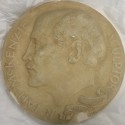
Who Is R. Tait McKenzie?
“He had once been a skilful sculptor and had earned an honest living …”
– The Adventure of The Six Napoleons (SIXN)

Who is Robert Tait McKenzie, the Canadian born sculptor who created the Three Hours For Lunch Club medal? Here is the biographical summary that the University of Pennsylvania has for him in the introduction to his archives there:
R. Tait McKenzie was born on May 26, 1867 to William McKenzie, a minister of the Free Church of Scotland, and Catherine Shiells McKenzie. His father died while McKenzie was a young boy of nine years. McKenzie spent his youth in the town of his birth, Almonte, Ontario. At the age of eighteen he entered McGill University and stayed nearly twenty years, as undergraduate, medical student, and after earning the M.D. degree in 1892, as Medical Director of Physical Training and Lecturer in Anatomy. It was in his undergraduate years that his interests in physical education and art first developed. James Naismith, inventor of the game of basketball, was a childhood friend of McKenzie’s, who attended McGill with him. It was Naismith who kindled McKenzie’s interest in gymnastic activities later, at McGill, McKenzie assisted Naismith in teaching gymnastics at the university. This not only gave McKenzie the opportunity to earn money to pay for his education, but served as the beginning of a career in physical education which would last more than fifty years. It was also at McGill where he developed his theories on physical education.
McKenzie believed that physical education and health activities had a beneficial relationship with the academic program in higher education. He taught that a full understanding of that relationship helped the student preserve health and physical efficiency, learn certain muscle skills, and to conduct himself as a gentleman in the social relationships of competitive games. McKenzie’s theme was that exercise kept human beings well, serving as a preventative measure to illness. In 1904 he was appointed a full faculty member at the University of Pennsylvania. McKenzie was attracted to Pennsylvania by the newly constructed gymnasium at Franklin Field, and viewed this as an opportunity to test his theory of physical education as a vehicle of preventative medicine. He developed a physical education program which became part of the core curriculum at the University. His book, Exercise in Education and Medicine, (Philadelphia: W.B. Saunders Company, 1909), set forth the evolution of physical education in the United States and discussed exercise as a necessity for all individuals. As a staunch advocate of amateurism, McKenzie believed intercollegiate athletics should be an educational program fully controlled by the institution. His advocacy led to the “Gates Plan” at Penn, which brought the alumni-controlled Council of Athletics under the direction of the administration’s Department of Physical Education. The Gates Plan was implemented in 1931 and subsequent years and placed the administration of student health, physical instruction, and intercollegiate athletics in McKenzie’s Department of Physical Education. It brought McKenzie well-earned stature and prestige at the University, but also saddled him with an unrelenting demand for his administrative presence.
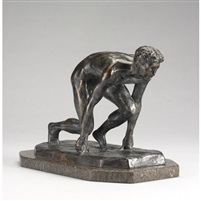
McKenzie’s first efforts at sculpture resulted from his inability to find sculptured pieces that demonstrated points in lectures on anatomy. His series of four Masks of Facial Expressions (1902) was his first public endeavor in sculpture. In 1903, excited by the direction of the Society of College Gymnasium Directors and recognizing a need for illustrative art, he proceeded down the career path for which he would be best known, that of sculptor. His Sprinter (1902) and Athlete (1903) were initially inspired by the short lived, but internationally popular movement of anthropometry. The art world soon found much to criticize in this style and McKenzie turned his attention to the study of European masters. By this time, however, his earlier interest in anthropometry was well known and his formal training in medicine was viewed as an unorthodox, if not unsuitable preparation for the practice of fine art. The result was that many art critics viewed his early work unfavorably. McKenzie traveled to Europe for study in an attempt to address these criticisms. At the University of Pennsylvania, McKenzie was afforded a private studio in the tower of Weightman Hall, (reached only by bringing down a jointed ladder) and he was surrounded by athletic programs and their participants to serve as models for his artwork. It was his association with Percy Gardner and E. Norman Gardiner, scholars of Greek sculpture, that did much to rehabilitate and enhance his reputation and image as a sculptor. They used his work to illustrate their publications; his reputation further grew overseas with his art shown at the Roman Exposition of 1911.
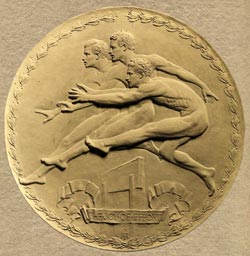
As his sculpture began to receive recognition, his work in relief also received notice. McKenzie mastered the art of the medallion, creating both memorial pieces and awards. At the 1912 Olympics, his most acclaimed medallion, Joy of Effort, was set into the wall of the great stadium at Stockholm. His relief entitled, Passing the Baton, was inspired by the Relay Carnival at the University of Pennsylvania. He produced medals for the Intercollegiate Conference Athletic Association (ICAA) to commemorate tennis, swimming, track and field, gymnastics, fencing, and golf as well as dozens of medals of other academic and athletic organizations.
McKenzie maintained his private practice while working as an educator and artist and was particularly interested in preventative medicine. Yet he also developed an interest in rehabilitation. His tenure at Penn included the first appointment at any American university as a professor of physical therapy. The war intensified his efforts in this area, and he was later recognized by the Academy of Physical Medicine for his contributions in rehabilitation. McKenzie served as the medical officer in charge of Heaton Park, Manchester, England during World War I. His involvement in the war remained that of a physician, and in 1918 he published two books, Reclaiming the Maimed and A Handbook of Physical Therapy. The latter was adopted by British, Canadian, and American armed forces as the official manual of hospital rehabilitation.
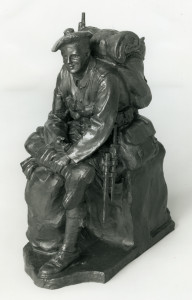
McKenzie’s only sculpture completed during this period was Blighty, a representation of a young Seaforth Highlander on leave in France. After the war McKenzie was commissioned to do a number of memorials, including the Call, the central figure of the Scottish-American war memorial; The Volunteer, in Almonte; Alma Mater, the Girard College memorial; and the Homecoming, the Cambridge memorial. It was in this post-war period that McKenzie’s great reputation was achieved. His work was displayed at several major exhibitions, including a show at Gump’s Gallery in San Francisco in 1923; Grand Central Art Galleries in New York in 1924; Georges Petit Galleries in Paris in 1924; New York in 1927; Toronto in 1928; the London Fine Arts Society in 1930; at the Olympic Games in Los Angeles in 1932 (where he won a prize for his Shield of Athletes); the Grand Central Art Galleries in New York in 1934; and the Olympic Games in Berlin in 1936.
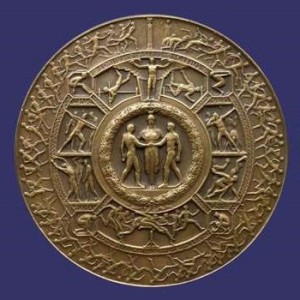
Demands placed on him by art commissions and exhibitions, coupled with his many speaking engagements on his concern over the mounting professionalism in college sports, prompted McKenzie to submit his resignation from his position as Director of Physical Education in 1929. The University offered McKenzie a one year leave of absence and upon his return in 1931 appointed him the J. William White Research Professor of Physical Education, the first appointment of its kind. His works on the campus of the University of Pennsylvania include the Youthful Franklin, commissioned in 1911 by the Class of 1904 and installed in front of Weightman Hall; the Provost Edgar Fahs Smith statue, installed on Smith Walk; and the J. William White collection at Gimbel Gymnasium. McKenzie continued his work in sculpture until his death in April of 1938. His heart was buried in Edinburgh at the base of his Call, which he considered his best work. This was in keeping with his belief in a spiritual inheritance from the Greeks, who held that the heart was the seat of the soul. He married Ethel O’Neil of Dublin, Ireland in October of 1907. She was a musician and poet whose collected poems were published in Secret Snow. They had no children.

Library of Congress
Was McKenzie a member of Christopher Morley’s Three Hours of Lunch Club? Probably not a regularly attending member, as McKenzie was based in Philadelphia. However, Morley lived in Philadelphia after his marriage and before they relocated to Green Escape, their home in Roslyn Estates, New York in 1920.
Both Morley and McKenzie were members of Philadelphia’s Franklin Inn Club. Both gentlemen were on a committee to strike a medal honoring the poet Walt Whitman, according to this blurb in a 1920 issue of The Bookman (thanks to Jon Lellenberg for that link).
To this day, bronze bas-reliefs by McKenzie of various members of the Franklin Inn Club can be found throughout the club’s headquarters.
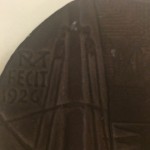
McKenzie’s work can be determined by his distinctive RMT monogram, usually accompanied by the word FECIT (meaning created or executed) and the year.
At the top of this post is a plaster model of a portrait medal of McKenzie that was designed by John R. Sinnock. If the Sinnock name seems familiar, most of you see one of his works on a daily basis. He designed the Roosevelt dime that has been in constant use since 1946. Sinnock also designed the Franklin Half Dollar that was minted from 1947 – 1963. It appears that this particular medal was never struck or cast. However, Sinnock’s bust of McKenzie was utilized for the SHAPE America’s (formerly known as the Society of Health and Physical Educators) for their R. Tait McKenzie Award that was created in 1968.
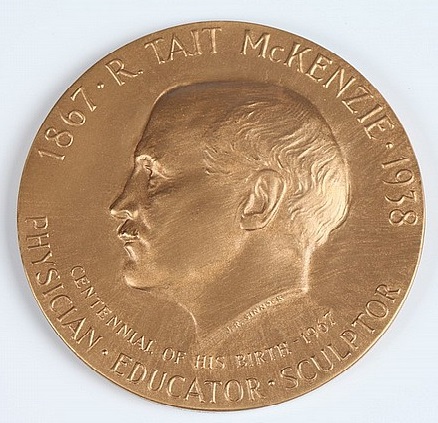
Beginning in the early 1930’s, McKenzie and his wife would spend their summers at the Mill at Kintail, near Ottawa. McKenzie purchased what had been an abandoned property and converted the building into a studio for himself. After the death of his wife, the property was donated to the local museum and is now a museum and conservation area. Details can be found here.
We will discuss more of McKenzie’s medallic art work in a future post.

This story was highlighted in the July 12, 2015 issue of The E-Sylum and can be viewed at http://www.coinbooks.com/club_nbs_esylum_v18n28.html#article22
[…] Readers may recall the name of Jo Davidson from our earlier post on the Hall of Fame for Great Americans medal series and his bust of FDR. Davidson also sculpted two busts that will be of interest to Sherlockians that we will discuss in a future post. Sinnock was the designer of the Roosevelt dime that you see in your pocket change daily and also designed a medal featuring R. Tait Mackenzie that we discussed in an earlier post. […]